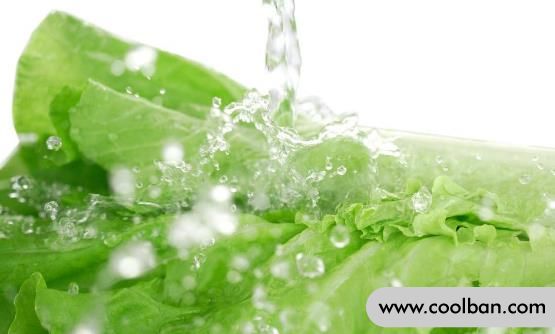How to remove pesticide residues in fruits and vegetables?
Pesticide residues are a major problem in food safety. Nearly 200,000 people in my country are poisoned by food with pesticide residues every year, accounting for about one-third of the food poisoning population. Long-term intake of excessive pesticides will affect multiple systems of the human body. cause harm. In order to reduce pesticide residues, many people choose to soak fruits and vegetables for a period of time after washing vegetables to remove pesticides, and some people even extend the soaking time to 3-4 hours or even overnight. However, this seemingly healthy behavior will not only cause the loss of nutrients in fruits and vegetables, but may even make the vegetables more "dirty" as they soak.

Is the longer the soaking time the better?
According to the solubility, pesticides can be divided into water-soluble and fat-soluble.
Most of the pesticides used in fruits and vegetables are fat-soluble pesticides, because the permeability of fat-soluble pesticides is much greater than that of water-soluble pesticides, and its pest control effect is much better than that of water-soluble pesticides. But this also causes the residues of fat-soluble pesticides on the surface of fruits and vegetables to be much higher than that of water-soluble pesticides.
The traditional method of soaking in water can only remove water-soluble pesticides on the surface of fruits and vegetables, but cannot remove fat-soluble pesticides. And during the soaking process, the water-soluble pesticides will dissolve in the water and form an aqueous solution with a certain concentration, but if the soaking time is too long, it is very likely that the pesticides in the water will be re-adsorbed by the fruits and vegetables.
In addition, if the soaking time is too long, many water-soluble nutrients in fruits and vegetables, such as vitamin B, vitamin C, calcium, iron, zinc, magnesium, etc., will dissolve in the water, resulting in the loss of their nutrients. Relevant studies have found that when fruits and vegetables are soaked for more than 15 minutes, the loss rate of vitamin C content reaches more than 90%.

How to properly remove pesticide residues?
So, the traditional soaking method is not feasible, how can we properly remove pesticide residues?
1. Blanching: After washing the fruits and vegetables, blanching them for 1-1.5 minutes can remove most of the residues of the fruits and vegetables, and will not cause too much loss of the nutrients of the fruits and vegetables. Taking cabbage as an example, rinsing with water can only remove 30% of its residual methamidophos content, while blanching for 1 minute can remove more than 90%.
2. Peeling: For some fruits that cannot be blanched and vegetables with thick skin, the pesticide residues can be removed by peeling. General pesticides only remain on the surface of fruits and vegetables, and the removal rate of pesticides by peeling can reach more than 90%.
3. Weak alkaline water rinsing: The common weak alkaline water in the kitchen mainly includes baking soda water, rice water and flour water. Most pesticides are easily decomposed under alkaline conditions, so using this kind of weak alkaline water to rinse fruits and vegetables has a slightly higher removal rate of pesticide residues than ordinary water.
4. Rinse with running water: Rinse fruits and vegetables with running water instead of soaking them for a long time, which can not only improve the removal rate of pesticide residues, but also will not cause a lot of loss of nutrients. At the same time, we also remind everyone to wash vegetables first and then cut them to ensure the integrity of vegetables. This will not only prevent pesticides dissolved in water from penetrating into vegetables through the cut surfaces of vegetables, but also effectively prevent the water-soluble nutrients from being degraded. Dissolution loss or oxidative loss.

5. Use detergent for cleaning skillfully: washing with water can remove most of the water-soluble pesticide residues, but for fat-soluble pesticide residues, we can use the role of detergent. When washing fruits and vegetables, add 1-2 drops of edible detergent to the soaking water, soak for 3-5 minutes, and then rinse with water for 1-2 times to remove most of the fat-soluble pesticide residues.
6. Expose the vegetables to the sun: According to the determination, after the fruits and vegetables are exposed to the sun for 5 minutes, the pesticide residues such as organochlorine and organic mercury on the fruits and vegetables can be reduced by about 60%.
7. Soak after rinsing: Fruits and vegetables bought from the market can be rinsed several times with clean water, and then soaked in water for about five to ten minutes, which can not only clean off those adhering to the surface. Easy-to-clean pesticides can also make toxins that have penetrated into the surface of vegetables and fruits to be discharged by soaking. Through such method steps, the residual pesticides can generally be removed.

